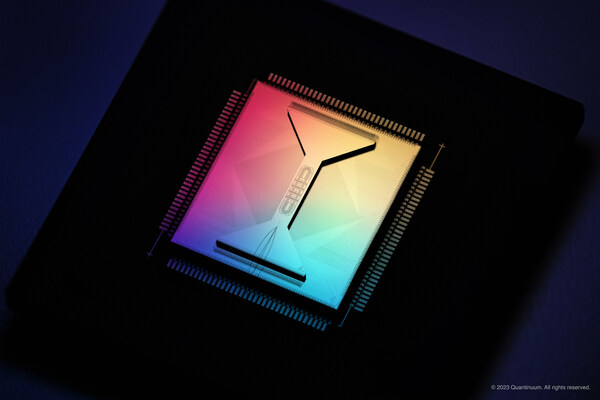
H1 quantum computer demonstrates an advance in fault-tolerant operations
Quantinuum’s H1 quantum computer successfully executes a fully fault-tolerant algorithm with three logically-encoded qubits
Fault-tolerant quantum computers that offer radical new solutions to some of the world’s most pressing problems in medicine, finance and the environment, as well as facilitating a truly widespread use of AI, are driving global interest in quantum technologies. Yet the various timetables that have been established for achieving this paradigm require major breakthroughs and innovations to remain achievable, and none is more pressing than the move from merely physical qubits to those that are fault-tolerant.
In one of the first meaningful steps along this path, scientists from Quantinuum, the world’s largest integrated quantum computing company, along with collaborators, have demonstrated the first fault-tolerant method using three logically-encoded qubits on the Quantinuum H1 quantum computer, Powered by Honeywell, to perform a mathematical procedure.
Fault-tolerant quantum computing methods are expected to open the way for practical solutions to real-world problems across domains such as molecular simulation, artificial intelligence, optimization, and cybersecurity. Following a succession of important breakthroughs in recent years in hardware, software and error correction, today’s results announced by Quantinuum in a new paper on the arXiv, “Fault-Tolerant One-Bit Addition with the Smallest Interesting Colour Code” are a natural step forward, and reflect the growing pace of progress.
Many companies and research groups are focused on achieving fault-tolerance by handling the noise that naturally arises when a quantum computer performs its operations. Quantinuum is a proven pioneer, achieving previous firsts such as demonstrating entangling gates between two logical qubits in a fully fault-tolerant manner using real-time error correction, and simulating the hydrogen molecule with two logically-encoded qubits.
By performing one-bit addition using the smallest-known fault-tolerant circuit, the team achieved an error rate almost an order of magnitude lower, at ~1.1×10-3 compared to ~9.5×10-3 for the unencoded circuit. The error suppression observed was made possible by the physical error rates of the quantum charge-coupled device (QCCD) architecture used in Quantinuum’s H-Series quantum computers, which are lower than in any other systems known to date. These error rates fall within the range at which fault-tolerant algorithms become feasible.
Ilyas Khan, Chief Product Officer and Founder at Quantinuum, said: “In addition to continuing to provide the quantum ecosystem with evidence of what is possible in these early days of quantum computing, the current demonstration is noteworthy for its ingenuity. The ion trap architecture of our H-Series offers the lowest physical error rates and the flexibility derived from qubit transport, which allows users of our hardware to implement a much wider choice of error-correcting codes, and that is what made this possible. Watch out for further important computational advances in the coming period as we link up the quality of our hardware with tasks that are meaningful in the real world.”
 If you enjoyed this article, you will like the following ones: don't miss them by subscribing to :
eeNews on Google News
If you enjoyed this article, you will like the following ones: don't miss them by subscribing to :
eeNews on Google News







